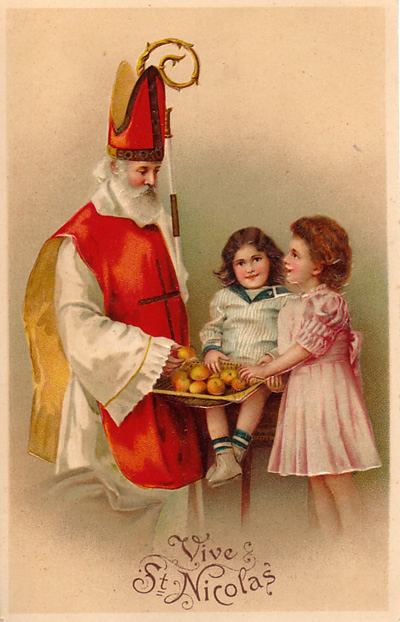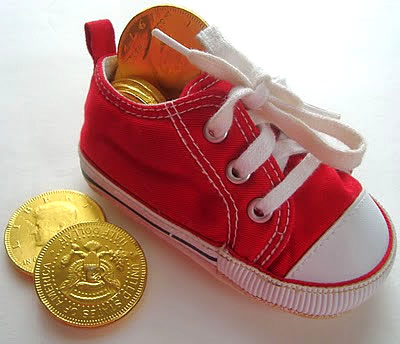
St.
Nicholas Day, or Eve, is celebrated on December 6. This is
the favorite holiday of all children - it's a gift-giving day. When
evening comes, St. Nicholas, a reverend gray-haired figure with
flowing beard, wearing gorgeous bishop's garments, gold embroidered
cope, mitre and pastoral staff, knocks on doors and enquires about
the behavior of the children. The custom of examining the children,
where they will cite a verse, sing, or otherwise show their skills,
is still widespread in German-speaking countries.
Each little one gets a gift for his performance.
The
story of St. Nicholas, the bishop of Myra in Minor Asia, who died
on December 6th, 343, dates back to the 4th century. He is said
to appear in the company of Knecht Ruprecht, "Knecht" meaning "servant".
Historically, Ruprecht was a dark and sinister figure wearing a
tattered robe with a big sack on his back in which, as a legend
says, he would put all naughty children. St. Nicholas also appears
together with St. Peter, with an angel, the
Christchild (Christkindl). As the gift-giving function of St.
Nikolaus began to shift to the splendor of the candle-lit Christmas
tree and emphasis on the birth of Christ, Knecht Ruprecht became
the servant and companion of the Christchild. In this role Ruprecht
became the patron saint of Christmas and was called "Weihnachtsmann,"
Father Christmas or Santa Claus.

The
most famous tradition on St. Nicholas Day is that little kids put
their polished shoes or socks outside the door or window, and at
night St. Nicholas fills them with little gifts.
Another
tradition kept for this day is baking
Stutenkerl, or Printenmann. It is best to bake the cake in a
special baking form depicting the saint, or just a man.
Next page
> St. Lucia's Day > Page
1, 2,
3, 4,
5, 6,
7, 8
|
|
